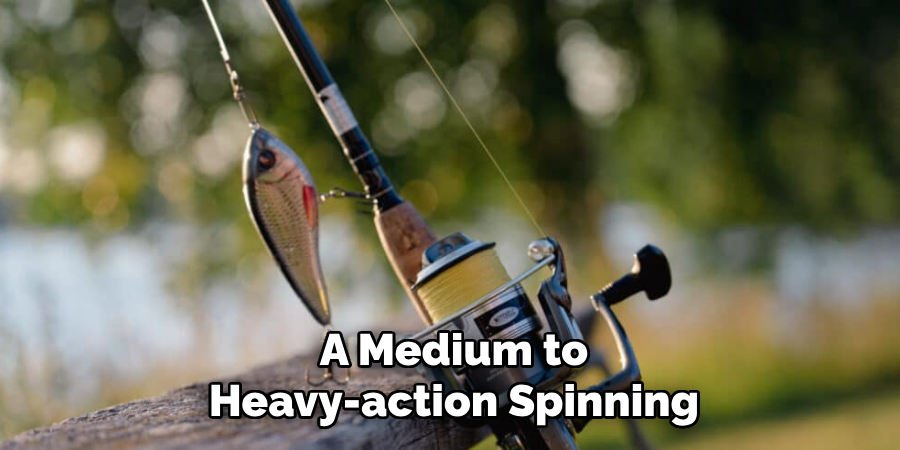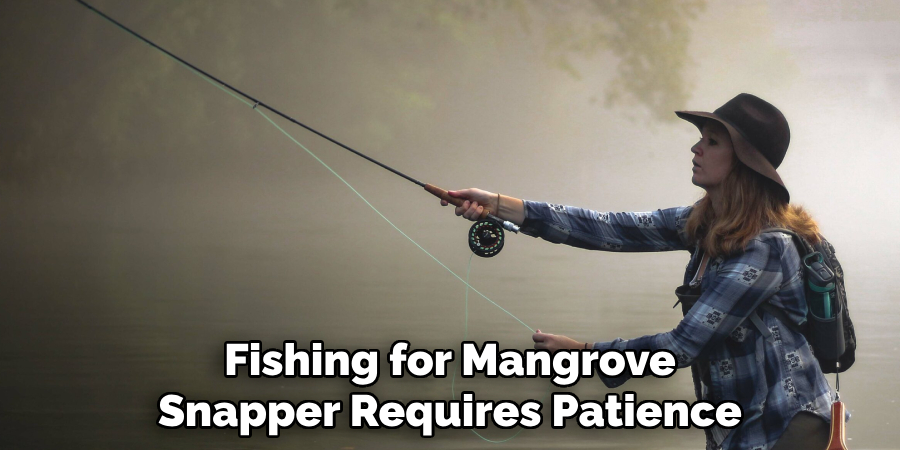Are you tired of fishing for the same old species and looking to add excitement to your angling adventures? Well, look no further than a mangrove snapper!
Fishing for mangrove or gray snapper is an exciting and rewarding experience for anglers of all skill levels. Known for their sharp eyesight, quick reflexes, and intense fight, these fish are a popular target in coastal waters. Found around mangroves, reefs, and structures like docks and jetties, mangrove snapper are prized for their taste and adaptability to various fishing methods. Whether fishing with live bait, artificial lures, or fly fishing, understanding their behavior and habitat is key to success.

This guide on how to fish for mangrove snapper will provide you with essential tips and techniques to help you land these prized fish.
What Are the Benefits of Fishing for Mangrove Snapper?
Before we dive into the specifics, let’s discuss why you should consider targeting mangrove snapper on your next fishing trip.
- Thrilling Fight: Known for their lightning-quick reflexes and intense fight, catching a mangrove snapper can be an exhilarating experience.
- Delicious Taste: Mangrove snappers are considered one of the tastiest fish in coastal waters, making them a popular target among anglers.
- Versatile Fishing Methods: Whether you prefer live bait, artificial lures, or fly fishing, a method is suitable for targeting mangrove snapper.
- Abundance in Coastal Waters: Mangrove snapper can be found in various locations, such as mangroves, reefs, and structures, making them easily accessible for anglers.
- Year-Round Availability: Unlike other fish species with specific fishing seasons, mangrove snapper can be caught year-round in most locations.
Now that you know the benefits of fishing for mangrove snapper, let’s dive into the techniques and tips to help you catch these elusive fish.
What Will You Need?
To successfully fish for mangrove snapper, you will need the following equipment:
- Fishing Rod: A medium to heavy-action spinning or baitcasting rod is recommended.
- Reel: Match your rod with a reel that can handle the weight of your intended catch.
- Line: Use 20-30 pounds of test monofilament or fluorocarbon line to withstand the sharp teeth and strong pull of mangrove snapper.
- Hooks: Choose a suitable hook size based on the size of your bait. Circle hooks are preferred as they reduce gut hooking and increase the chances of release.
- Weights: Using weights ranging from 1/4 to 1 ounce depending on water depth and current.
- Baits: Live shrimp, pilchards, pinfish, and cut bait are effective for mangrove snapper.
- Lures: Jigs, jerk baits, and soft plastics in natural colors can also attract the attention of mangrove snappers.
- Fishing License: Always have a valid fishing license for the location you are fishing in.
Once you have all the necessary equipment, it’s time to hit the water and start fishing for mangrove snapper.

9 Easy Steps on How to Fish for Mangrove Snapper
Step 1: Locate Mangrove Snapper Habitats
Mangrove snappers are commonly found in areas with structure and cover, making them a popular target in coastal regions. Focus your search around mangroves, rocky shorelines, docks, bridges, and artificial reefs where they tend to congregate.
These predators prefer locations with plenty of hiding spots to ambush their prey, so areas with submerged vegetation, fallen trees, or underwater ledges are particularly productive. You may find them closer to shoreline structures during high tide, while low tide often pushes them into deeper waters. Using a fish finder can help pinpoint schools of snapper in larger bodies of water and save time on your search. Understanding their preferred habitats is key to increasing your chances of success.
Step 2: Choose the Right Tackle and Gear
When targeting mangrove snapper, selecting the proper tackle and gear is essential. Opt for a medium to light spinning rod paired with a reel with a smooth drag system. A braided fishing line within the 10-20 lb range is an excellent choice due to its strength and sensitivity, allowing you to detect even the slightest bites.
Connect a fluorocarbon leader of similar strength to the end of your line to ensure stealth, as mangrove snappers are known for their keen eyesight. Equip yourself with various hooks, typically in the size range from 1/0 to 3/0, depending on the bait you’ll be using. The proper tackle setup ensures a better chance of landing these elusive fish.

Step 3: Select the Best Bait
Using the right bait can make a significant difference when fishing for mangrove snapper. Live bait is often the most effective, with options like shrimp, pilchards, finger mullet, or small pinfish being particularly enticing to these fish. Cut bait, such as chunks of squid or fresh fish, can also work well, especially when targeting larger snapper.
If live or fresh bait isn’t available, artificial lures like soft plastics or small jigs can still produce results, mainly when worked with realistic movements. The key is to match the bait to what the snapper naturally feeds on in the area. Always keep a few different options on hand to adapt to changing conditions or fish preferences.
Step 4: Learn the Right Fishing Techniques
Proper technique is essential when targeting mangrove snapper. Focus on areas like dock pilings, mangrove roots, reefs, and rocky structures where these fish are commonly found. Use a stealthy approach to avoid spooking them, as mangrove snapper are known for being cautious.
When casting your bait, aim to position it near the structure, allowing it to drift naturally with the current. Once the snapper strikes, set the hook quickly and firmly, as their sharp teeth and fast reflexes can make it easy for them to steal the bait. Be prepared for a strong fight, as these fish are powerful for their size and will test your skill and patience.
Step 5: Practice Patience and Observation
Fishing for mangrove snapper requires patience and a keen eye for detail. Pay attention to the water conditions, such as tides, currents, and clarity, as these factors can influence the snapper’s behavior.
Early morning and late evening are often the most productive times to fish, as snapper tend to feed more actively during low-light conditions. Observe the signs of fish activity, like splashes or birds hovering over a specific area, and adjust your approach accordingly. Remember, successful fishing often comes down to persistence, improvisation, and learning from each outing.

Step 6: Handle and Release with Care
Once you’ve successfully caught a mangrove snapper, it’s essential to handle it properly to ensure its survival if you plan to release it. Use wet hands or a damp cloth to hold the fish, as this helps preserve its protective slime coating. Avoid squeezing too tightly, as this can cause internal injuries.
If the fish is deeply hooked, use pliers or a dehooking tool to carefully remove the hook. When releasing the snapper, gently lower it back into the water and allow it to swim away under its own power. Proper handling supports conservation efforts and ensures healthier fish populations for future anglers.
Step 7: Clean and Prepare Your Catch
Proper cleaning and preparation are essential if you choose to keep your mangrove snapper. Begin by rinsing the fish with clean water to remove any debris. Use a sharp filleting knife to carefully scale the fish, working from the tail towards the head.
Once scaled, make a shallow cut along the belly and remove the entrails, taking care to rinse the cavity thoroughly. After cleaning, the fish can be filleted or cooked whole, depending on your preference. Mangrove snapper is known for its mild, flaky flesh, making it a delicious grilling, baking, or frying option. Carefully preparing your catch ensures a satisfying meal to cap off your fishing adventure.
Step 8: Use Conservation-Friendly Techniques
While fishing for mangrove snapper can be an exciting and rewarding experience, it’s essential to do so responsibly. These fish are a vital part of the coastal ecosystem and contribute to maintaining healthy populations of other marine species.
Practicing catch-and-release techniques, as well as using proper handling methods, helps ensure minimal impact on their populations. Additionally, being mindful of local regulations and size limits can help preserve the future of these fish for generations to come. As anglers, we are responsible for protecting the resources we enjoy and respecting the habitats that support them.
Step 9: Share Your Passion for Fishing
Fishing for mangrove snapper is not just about the catch; it’s also an opportunity to share your love for the outdoors. Whether introducing someone new to fishing or sharing tips with fellow anglers, spreading your knowledge and enthusiasm creates a sense of community.
Encourage sustainable practices by teaching others about responsible fishing techniques and the importance of conservation.

By following these steps and learning and adapting, you can increase your chances of success when targeting mangrove snapper.
Conclusion
How to fish for mangrove snapper is a rewarding experience that combines skill, patience, and respect for the environment.
By understanding their habitat, using the right gear and bait, and practicing sustainable fishing methods, you can increase your chances of success while preserving this valuable species. Whether you’re a seasoned angler or a beginner, targeting mangrove snapper provides an opportunity to connect with nature and enjoy the thrill of fishing.
Remember, the joy isn’t just in the catch—it’s also in the memories made along the way and the care you take to ensure these resources thrive for future generations.
About the Author
Jennifer Branett is the author of Fishy Kayak and an expert in fish-related fields, with over 10 years of experience. Her work blends passion for fishing with a commitment to conservation.
Educational Background
Degree: Bachelor’s in Marine Biology
Institution: University of California, Santa Barbara
Specializations: Aquatic ecosystems, fish behavior, and sustainable practices
Professional Experience
Conservation Projects:
Collaborated with local organizations to restore aquatic habitats
Developed educational programs on sustainable fishing practices
Publications:
Authored articles for fishing magazines and environmental journals
Featured speaker at fishing expos and conservation conferences
Key Areas of Expertise
Fishing Techniques:
Kayak fishing strategies
Freshwater and saltwater fishing methods
Environmental Stewardship:
Advocacy for sustainable fishing
Promoting biodiversity in aquatic environments
Awards and Recognition
Recipient of the [Specific Award Name] for contributions to marine conservation
Recognized as a leading voice in the fishing community by [Organization/Publication Name]
Community Engagement
Workshops and Seminars:
Regularly hosts events to educate anglers on sustainable practices
Engages with youth programs to inspire the next generation of fishers
Online Presence:
Maintains an active blog sharing tips, stories, and conservation efforts
Engages with followers on social media to promote fishing ethics
Personal Interests
Enjoys kayaking in scenic locations
Passionate about photography, capturing the beauty of nature
Advocates for local conservation efforts in her community
